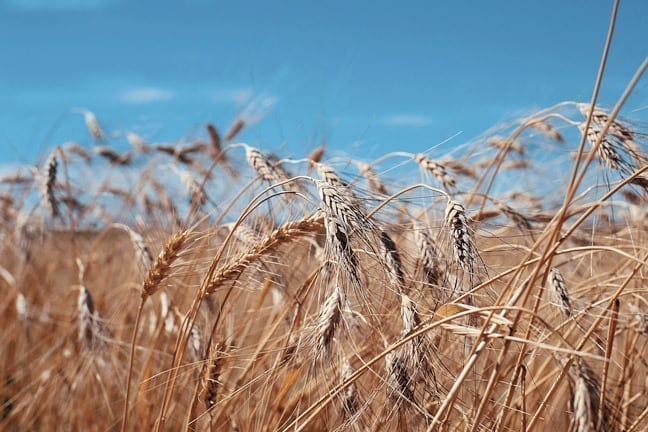Although we’re always looking for the next best superfood trend, one nutrient-rich, health-boosting food we can always count on are whole grains. Packed with fiber, B vitamins, selenium and protein, whole grains contribute to heart health and help aid weight loss, since they take longer to break down and keep you fuller for longer.Recently, we tried a new grain that’s also part of the “ancient grain” family: khorasan wheat, also known by brand name Kamut, the leading producer of this specific grain in North America.The Facts About Ancient GrainsAlthough there isn’t really a distinct definition of what makes a grain “ancient,” any list you find will probably include quinoa, amaranth, buckwheat, barley, millet, spelt, teff and khorasan/Kamut. Most of these belong to the club because they can be traced back to an ancient civilization that grew and consumed the grain. And, as we can tell from the Paleo diet obsession, nutrition trends have seemed to focus recently on eating classic foods our ancestors would have eaten — AKA, as natural and unprocessed as possible.Ancient grains, including khorasan, are less processed, higher in nutrients and better tasting than modern grain, explained Keri Glassman, R.D. “They are packed with nutrients including fiber, protein and vitamins and minerals,” she added.During the growing and processessing phases of many modern grains, they become stripped of many of their nutrients in order to maximize volume and meet the crazy high demand for affordable food in our country. “Much of this trouble could be reversed by a return to ancient and heritage wheat, traditional and artisan bread and pasta production, and organic agriculture,” Bob Quinn, Ph.D., organic farmer and founder of Kamut International, explained to us.In a recent survey, nutrition experts predicted ancient grains will be one of the top diet trends in 2015. Proof that their predictions are holding true: General Mills just unveiled a new Cheerios variety, Cheerios + Ancient Grains. It contains quinoa, Kamut khorasan wheat, and spelt.What’s Khorasan Wheat?Khorasan wheat is closely related to durum, which is used to make pasta. “The wheat family is broken into three main divisions depending upon the number of chromosomes it has,” Quinn said. They both belong to the same family, called tetraploids — meaning they have four set of chromosomes, two from each parent.”This grain originated in Mesopotamia [in a region called Khorasan, which is now modern-day Afghanistan and Iran], and is still found in small local farm plots in Turkey, Armenia and Egypt where is it grown for local and family use only,” explained Quinn. Kamut is responsible for introducing khorasan into the Western world, and the trademarked brand promises its khorasan is 100% certified organic, non-GMO, pure, and high quality. The grain is grown on farms in Montana, North Dakota, Alberta, Canada, and Sakatchewan, Canada.And it comes with a slew of health benefits. “Peer-reviewed scientific journal articles have demonstrated that it is anti-inflammatory, produces the effects of strong antioxidants, and reduces symptoms of cardiovascular disease and irritable bowl syndrome, as well as aiding with weight loss,” Quinn noted. Plus, it’s much higher in protein and important minerals like selenium, zinc and magnesium, compared to modern wheat.Khorasan is also well-tolerated by people with non-celiac gluten sesitivity, and has been shown to increase stamina, energy levels and recovery in athletes who consume it before an intense workout.How to Incorporate Khorasan Into Your DietKamut is sold in a pretty wide variety of forms: cold and hot cereals, pasta, frozen pasta dinners, bread, crackers and snacks, flour, and in grain form, wheat berries. You can sub it in for your go-to oatmeal, sprinkle it on a salad, or simply use the grain as a side dish with nuts and veggies, Glassman recommended.The grain is pretty large compared to normal grains (about twice the size of your average piece of rice), and slightly harder. It has a slight natural sweetness and a nutty, buttery flavor, making it a tasty addition to both sweet or savory dishes. Enjoy!READ MORE: Gluten-Free Alternatives to White Flour (Recipes)READMORE: The Best Bread for Your Health
© YouBeauty 2024




































